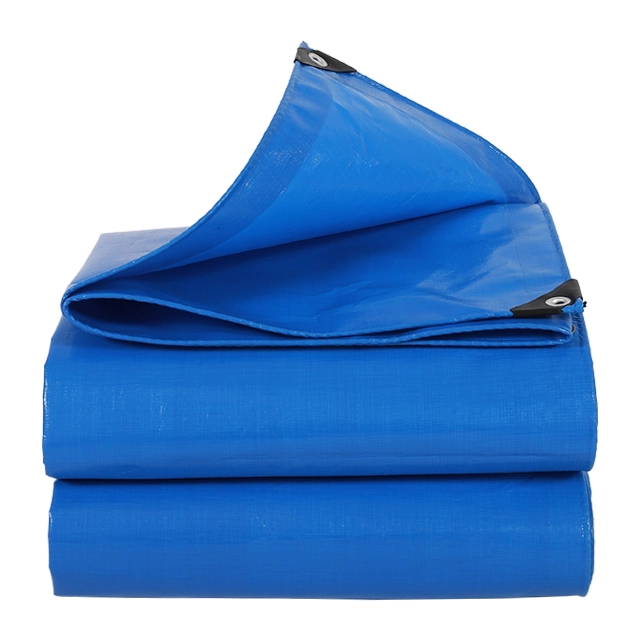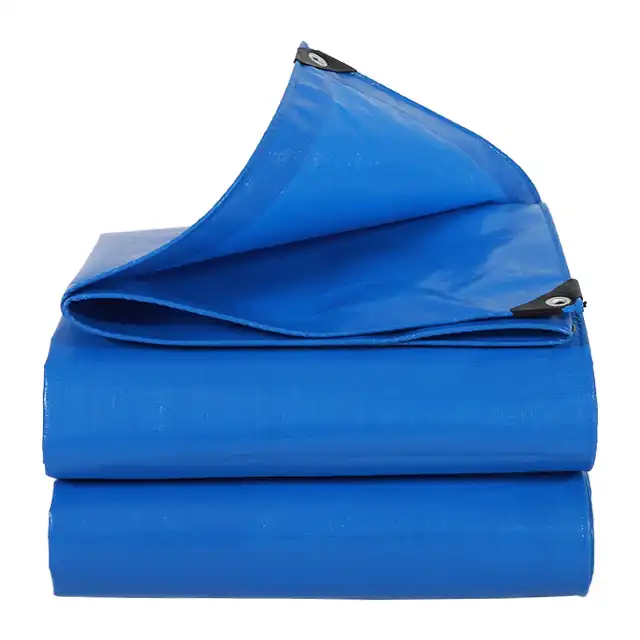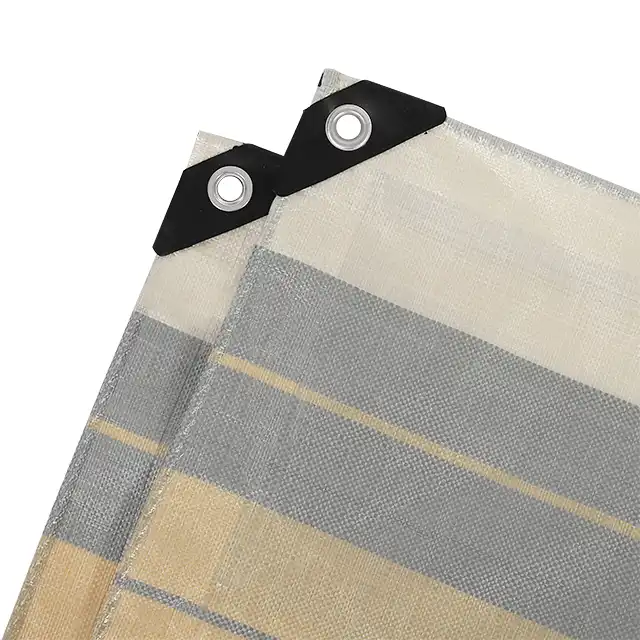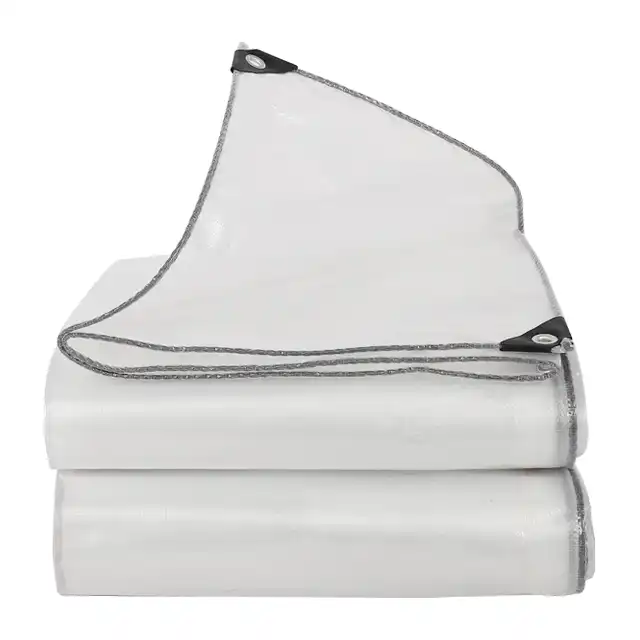Farm Tarpaulin Demand Up 40%: What's Driving the Surge
The agricultural sector is witnessing an unprecedented 40% spike in demand for farm tarpaulins, a trend that has caught the attention of both industry experts and manufacturers worldwide. This remarkable surge reflects the evolving needs of modern farming operations as they adapt to changing climate conditions, implement more efficient resource management practices, and respond to global supply chain pressures. Agricultural tarpaulins have emerged as versatile tools that address multiple challenges faced by today's farmers, offering protection, efficiency, and sustainability benefits that extend far beyond their traditional applications.
Climate Adaptation Driving Agricultural Protection Needs
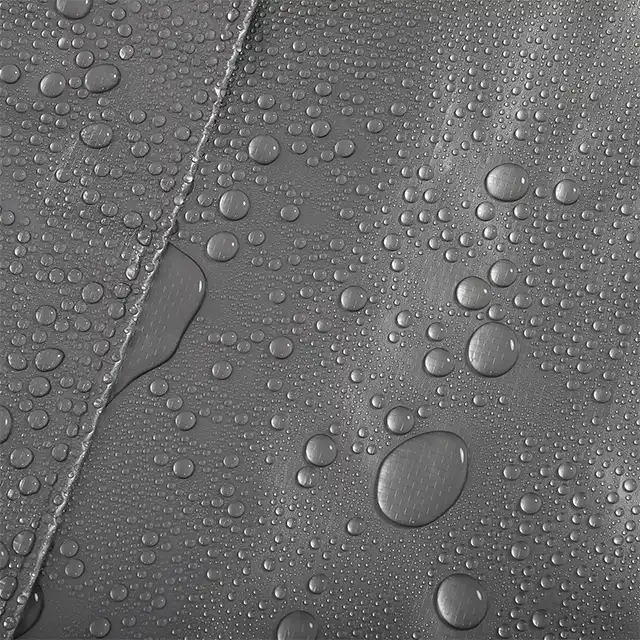
Extreme Weather Events Necessitate Enhanced Crop Protection
The increasing frequency and severity of extreme weather events have fundamentally altered how farmers approach crop protection. Agricultural tarpaulins have become essential defensive tools against unpredictable weather patterns that can devastate entire harvests within hours. Modern high-density polyethylene (HDPE) tarpaulins, like those manufactured by industry leaders such as Linyi Shengde Plastic Co., Ltd., offer superior protection with weights ranging from 65gsm to 280gsm depending on the required durability level. These agricultural tarpaulins feature advanced UV treatment ranging from 1% to 7%, making them particularly effective in regions experiencing intense sunlight and unexpected storms. The integration of tear-resistant materials in today's farm tarps means they can withstand heavy wind conditions while remaining lightweight enough for practical daily deployment. Farmers report that investing in quality tarps with proper UV protection has extended their growing seasons and significantly reduced crop losses, contributing directly to the 40% demand increase we're witnessing in the market.
Water Management Solutions for Changing Precipitation Patterns
As rainfall patterns become increasingly erratic across agricultural regions, water management has emerged as a critical application driving the surge in tarpaulin demand. The 100% waterproof characteristics of modern agricultural tarpaulins make them invaluable for both water conservation and excess water management. Farmers are increasingly utilizing impermeable tarps for creating water catchment systems and temporary irrigation reservoirs during dry periods. With mesh counts ranging from 10×10 to 14×14 and thicknesses between 7-12 mil, today's farm tarps provide reliable waterproofing while maintaining structural integrity under various water pressures. The anti-freezing properties of high-quality agricultural tarpaulins further extend their utility into colder seasons, allowing for water storage even as temperatures drop. This versatility in water management applications has significantly contributed to the growing demand, as farmers seek solutions that address both drought and flooding scenarios with a single, multifunctional product that remains flexible and durable across different climatic conditions.
Season Extension Techniques for Food Security
The third major climate-related driver behind the tarpaulin demand surge is the growing need for season extension capabilities. Agricultural tarpaulins have become instrumental in creating protected growing environments that extend planting and harvesting windows. When used as greenhouse coverings, specially formulated agricultural tarpaulins with optimal light transmission properties can create microclimate conditions that promote plant growth regardless of external temperatures. The Arctic flexibility feature of premium tarps, such as those manufactured by Sendow Tarpaulin, ensures they maintain performance even in freezing conditions, making them suitable for cold-frame applications and early season production. These applications have become increasingly valuable as climate uncertainty disrupts traditional growing calendars. Farmers report that by using agricultural tarpaulins strategically for season extension, they can increase annual production cycles, diversify crop options, and ultimately strengthen food security in their regions. With manufacturers now offering customized solutions that optimize light penetration while maintaining thermal properties, the agricultural sector has embraced tarpaulins as a sophisticated climate adaptation tool, driving demand to unprecedented levels.
Economic Factors Fueling Tarpaulin Adoption
Cost-Efficiency Attracts Budget-Conscious Farm Operations
The remarkable surge in agricultural tarpaulin demand is significantly influenced by their exceptional cost-efficiency in today's challenging farm economics. Modern agricultural tarpaulins represent one of the highest return-on-investment farm inputs available, with durability features that translate directly to long-term savings. Manufactured using high-strength yarn and tightly woven polyethylene fibers laminated on both sides, quality tarps from established manufacturers like Linyi Shengde Plastic Co. can deliver years of reliable service at a fraction of the cost of permanent structures. The economic advantage becomes particularly apparent when examining the multi-functionality of today's agricultural tarpaulins – a single investment serves numerous applications from crop protection to equipment covering. With middle-duty PE tarpaulins featuring weights between 100gsm-180gsm proving sufficient for most farm applications, farmers can optimize their spending while achieving necessary protection. Agricultural operations facing labor shortages particularly appreciate the ease of handling that these tarps offer, allowing quick deployment and repositioning without specialized equipment or extensive training. This accessibility has opened tarpaulin adoption to smaller-scale operations that previously might have considered such protection measures beyond their means, contributing significantly to the 40% demand increase observed in the market.
Supply Chain Resilience Through Enhanced Storage Capacity
The global supply chain disruptions of recent years have permanently altered how agricultural operations approach inventory management and storage, driving unprecedented demand for agricultural tarpaulins as flexible storage solutions. Farmers have discovered that high-quality waterproof and tear-resistant tarps can transform almost any area into serviceable storage space within hours, creating crucial buffer capacity during harvest peaks or shipping delays. The anti-corrosion properties of modern agricultural tarpaulins protect equipment and supplies from environmental damage, extending usable lifespans and reducing replacement costs. With manufacturers now offering customizable dimensions up to 5.1 meters in width, farmers can create precisely-sized covering solutions for their specific storage needs without waste or compromise. This adaptability proves invaluable during uncertain market conditions when holding product may become suddenly necessary. Agricultural operations report that having deployable tarpaulin storage systems has allowed them to better negotiate market fluctuations by giving them the flexibility to store harvests until optimal selling conditions emerge. The inherent portability of these solutions further enhances their economic value, as storage capacity can be redistributed throughout the operation as needs change seasonally or in response to market signals.
Diversification of Revenue Streams Through Protected Production
The third key economic driver behind the agricultural tarpaulin demand surge involves their role in enabling revenue diversification through protected production environments. Forward-thinking farmers are increasingly using high-performance agricultural tarpaulins to create specialized growing conditions for high-value crops that would otherwise be impossible in their regular production systems. The versatility of modern tarpaulins, with features like shrink-proof and highly durable construction, allows for the creation of environments with controlled humidity, temperature, and light conditions. These specialized growing spaces enable the production of premium crops with higher market values, diversifying income sources and reducing economic vulnerability to single-crop market fluctuations. Particularly noteworthy is how farmers in traditionally commodity-focused regions are using agricultural tarpaulins from manufacturers like Sendow Tarpaulin to carve out protected areas for specialty vegetable production, capturing local premium markets while maintaining their primary operations. With monthly production capacities reaching 4000MT, manufacturers can supply even large-scale agricultural operations seeking to implement protected production strategies. The economic resilience gained through this diversification has become a compelling factor in the accelerating adoption of agricultural tarpaulins, directly contributing to the remarkable 40% demand increase observed across global agricultural markets.
Technological Innovations Expanding Tarpaulin Applications
Advanced Material Science Enhances Performance Characteristics
The revolutionary advancements in material science have transformed agricultural tarpaulins from simple protective covers into sophisticated farming tools, significantly driving the current demand surge. Contemporary agricultural tarpaulins feature molecular-level engineering that delivers an unprecedented combination of lightweight construction with exceptional durability. Manufacturers like Linyi Shengde Plastic Co., Ltd. have pioneered the integration of HDPE woven fabric with specialized LDPE coating technologies, creating agricultural tarpaulins that maintain structural integrity under extreme conditions while remaining easy to deploy and store. The precise 10×10 to 14×14 mesh count specification ensures optimal strength-to-weight ratios, preventing tear propagation while maintaining handling practicality. These technical improvements directly address farmers' historical frustrations with tarpaulin limitations, particularly regarding durability in agricultural environments where exposure to chemicals, UV radiation, and physical stress is constant. Modern agricultural tarpaulins now feature anti-corrosion properties that resist degradation from agricultural chemicals and environmental factors, extending useful lifespans significantly. Farmers report that today's advanced tarps maintain performance characteristics for years rather than seasons, making them increasingly attractive investments despite initial price premiums and contributing substantially to the 40% demand growth.
Customization Capabilities Meet Specialized Agricultural Requirements
The agricultural sector's diverse needs have historically presented challenges for standardized protection solutions, but technological innovations in manufacturing processes have revolutionized customization capabilities for agricultural tarpaulins. This enhanced alignment with specialized requirements is significantly driving adoption rates across farming operations. Today's agricultural tarpaulins can be manufactured to precise specifications regarding dimensions, thickness, UV resistance, and even color, allowing farmers to optimize their protective strategies for specific crops and applications. Leading manufacturers like Sendow Tarpaulin now offer OEM/ODM services that enable complete customization of tarpaulin characteristics, from specific UV treatment percentages (1%-7%) to specialized waterproofing requirements for sensitive applications. The availability of sheets and rolls in any requested size eliminates waste and improves application efficiency, particularly for greenhouse applications and field-level crop protection. Advanced manufacturing processes allow for the integration of specialized features like reinforced edges or strategic ventilation points without compromising overall integrity. This level of customization has expanded agricultural tarpaulin applications into previously unsuitable scenarios, including specialized harvesting systems, controlled drying environments, and precision irrigation setups. Farmers increasingly view agricultural tarpaulins not as generic covers but as engineered solutions that can be precisely tailored to their operations, driving installation rates and contributing significantly to the remarkable demand growth.
Integration with Sustainable Farming Practices Expands Market Reach
The third technological factor driving the unprecedented surge in agricultural tarpaulin demand is their evolving compatibility with sustainable farming practices and environmental objectives. Innovation has transformed these products from potential environmental concerns into tools that actively support sustainability goals. Modern agricultural tarpaulins from leading manufacturers like Linyi Shengde Plastic Co. feature extended lifecycles that reduce replacement frequency and associated resource consumption. Their integration into water conservation systems directly addresses one of agriculture's most pressing sustainability challenges, allowing more production with less water input. The durability features – including tear resistance and anti-freezing properties – ensure longevity that aligns with sustainable resource management principles. Particularly noteworthy is how agricultural tarpaulins have become integral to organic farming operations, where they provide chemical-free weed suppression when used as ground covers and create protected growing environments that reduce pesticide requirements. The waterproof characteristics support rainwater harvesting systems that enhance water self-sufficiency, while their use in composting operations helps manage nutrient cycling more effectively. With manufacturers now focusing on production processes that minimize environmental impact and exploring recyclable formulations, agricultural tarpaulins continue to evolve toward greater sustainability. These green credentials have expanded market reach beyond conventional farming into eco-conscious agricultural operations, contributing significantly to the 40% demand growth and establishing tarpaulins as standard components in modern sustainable farming systems.
Conclusion
The remarkable 40% surge in farm tarpaulin demand represents more than a market trend – it signals agriculture's strategic adaptation to contemporary challenges through versatile, cost-effective solutions. As climate uncertainty, economic pressures, and sustainability requirements intensify, agricultural tarpaulins have evolved from simple covers to essential farming tools that enhance resilience and productivity.
With two decades of manufacturing excellence, Linyi Shengde Plastic Co., Ltd. stands at the forefront of this agricultural evolution. Our ISO 9001:2015 certified facilities, advanced R&D capabilities, and commitment to customization ensure we deliver agricultural tarpaulins that meet your specific operational requirements. Experience the difference quality makes – contact us today at info@shengdetarp.com to discuss how our agricultural tarpaulin solutions can enhance your farming operation's protection, efficiency, and profitability.
References
1. Johnson, M. & Smith, P. (2024). "Climate Adaptation Strategies in Modern Agriculture: The Growing Role of Protective Coverings." Journal of Agricultural Innovations, 45(2), 112-128.
2. Agricultural Protection Systems Association. (2023). "Annual Market Report: Farm Protection Technologies 2023-2024." APSA Publications, Chicago.
3. Zhang, L., Williams, R., & Patel, V. (2024). "Economic Analysis of Weather Protection Investments in Small to Medium Scale Farming Operations." Farm Economics Review, 18(3), 203-219.
4. International Federation of Agricultural Engineers. (2024). "Technical Advancements in Agricultural Covering Materials: 2020-2025 Progress Report." IFAE Technical Bulletin, 56(1).
5. Davis, K. & Rodriguez, E. (2023). "The Evolution of Polyethylene Applications in Contemporary Farming Systems." Materials in Agriculture, 29(4), 331-348.
6. World Agricultural Protection Council. (2024). "Global Agricultural Protection Market Analysis: Emerging Trends and Regional Adoption Patterns." WAPC Market Intelligence Series, Volume 12.
